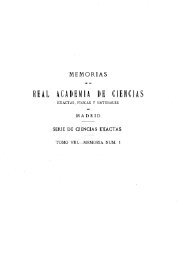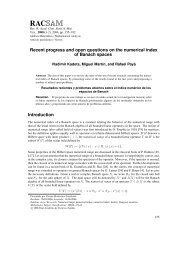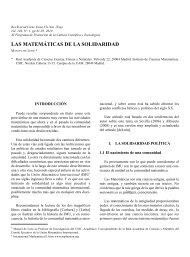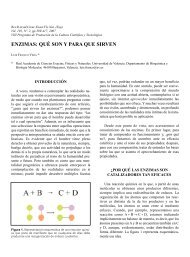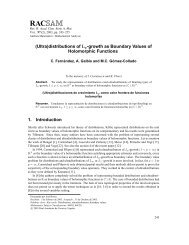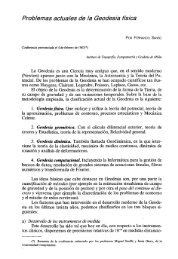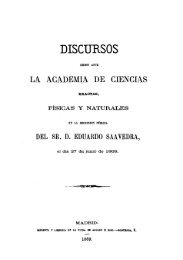The water footprint and virtual water exports of Spanish tomatoes
The water footprint and virtual water exports of Spanish tomatoes
The water footprint and virtual water exports of Spanish tomatoes
- No tags were found...
You also want an ePaper? Increase the reach of your titles
YUMPU automatically turns print PDFs into web optimized ePapers that Google loves.
36 THE WATER FOOTPRINT OF TOMATO PRODUCTION<strong>water</strong> <strong>footprint</strong> <strong>of</strong> <strong>tomatoes</strong> in Spain (Chapagain <strong>and</strong> Orr,2009; Madrid <strong>and</strong> Velázquez, 2008; Aldaya <strong>and</strong> Llamas,2009). Chapagain <strong>and</strong> Orr (2009) obtained an average green<strong>and</strong> blue <strong>water</strong> <strong>footprint</strong> <strong>of</strong> 74 m 3 /t, compared to our 92 m 3 /t.Madrid <strong>and</strong> Velázquez (2008) studied the Andalusia region,obtaining blue <strong>water</strong> values <strong>of</strong> 80 m 3 /t, which in our casewas 58 m 3 /t as an average for this region. Aldaya <strong>and</strong> Llamas(2009), in their study <strong>of</strong> the Guadiana river basin calculated6 <strong>and</strong> 115 m 3 /t for the green <strong>and</strong> blue <strong>water</strong> <strong>footprint</strong>in open air irrigated tomato <strong>of</strong> the middle Guadianabasin, which corresponds to Badajoz province. In our case,the average <strong>water</strong> <strong>footprint</strong> for this production system wasvery similar; amounting to 6 <strong>and</strong> 103 m 3 /t. Garrido et al.(2010) calculated an average green <strong>and</strong> blue <strong>water</strong> <strong>footprint</strong><strong>of</strong> tomato production <strong>of</strong> 95 m 3 /t.<strong>The</strong> estimation <strong>of</strong> leached Nitrogen is a very context specificfactor. With this in mind, we tried to make an approximation,based on the Nitrogen balances. <strong>The</strong> values obtainedshould be taken as a first approximation, by nomeans we consider it a definitive measurement. With thismethodology, we made a number <strong>of</strong> assumptions in orderto calculate the grey <strong>water</strong> <strong>footprint</strong>. First, the excess Nitrogenfrom the N balance data <strong>of</strong> the <strong>Spanish</strong> Ministry <strong>of</strong>the Environment <strong>and</strong> Rural <strong>and</strong> Marine Affairs are providedfor the year 2006 (MARM, 2008). Excess Nitrogen thereforewas assumed to be constant throughout the years foreach province <strong>and</strong> between production systems. <strong>The</strong> resultinggrey <strong>water</strong> <strong>footprint</strong> thus mainly depends on the yieldsused. Besides, the excess Nitrogen data does not distinguishbetween rainfed <strong>and</strong> irrigated farming. Since the rainfedproduction has a very limited area, its weight in the Nitrogenbalance calculation is limited <strong>and</strong> may not be representative.Secondly, no temporal calculation less than a yearwas taken into account. Lixiviation occurs on early stages<strong>of</strong> the crop <strong>and</strong> is sharply dependent on precipitation



